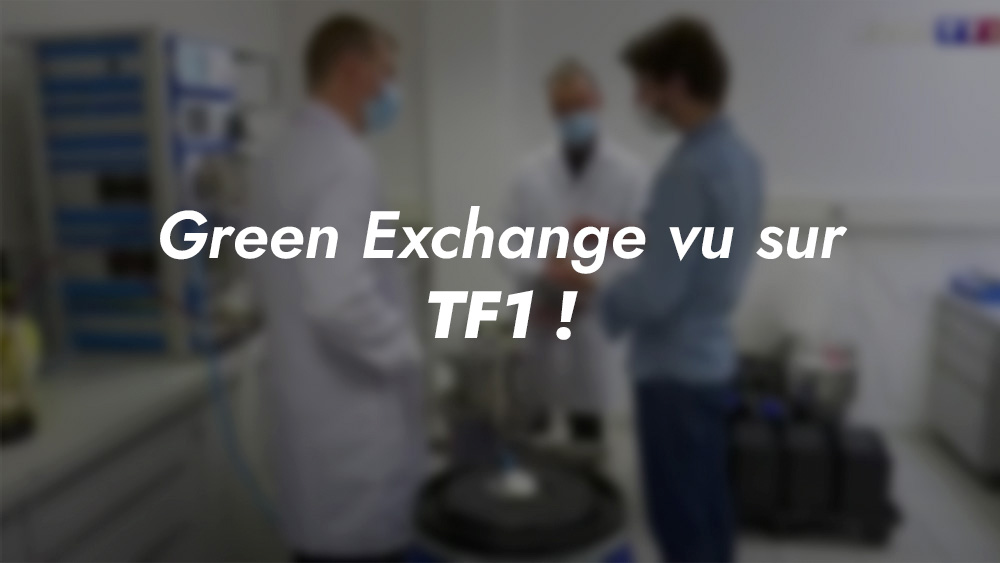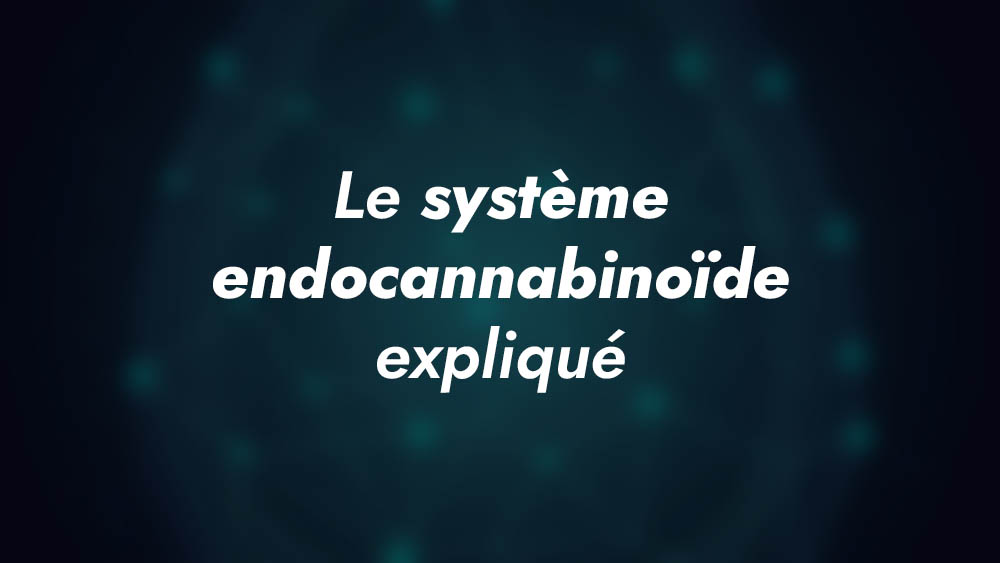
Green Exchange seen on TF1!
March 15, 2021
3 quality criteria and lots of tips for choosing your CBD oil
March 24, 2021Definition of the endocannabinoid system
The discovery of the endocannabinoid system (ECS) is relatively recent, since the first signs of its existence were observed in the 90s. It was then that research into therapeutic cannabis began to gather pace.
In fact, over the course of the experiments, it became apparent that the SEC is :
- A vast communication system, present throughout the body;
- Able to regulate our main physiological functions.
We go into detail.
A communication network between our cells
In our bodies, everything is interconnected: our cells are constantly communicating with each other to activate the biochemical reactions required for our metabolism to function. This is how they trigger the healing process in the event of injury, and the immune response in the event of infection.
To communicate, as you know, you need two things: a receiver and a sender. And biology is no different. Our cells are equipped with several types of receptor, designed to receive the chemical message from specific transmitters.
Our nervous and immune systems are two receptor/emitter networks we know quite well. The endocannabinoid system is a third.
What does this mean in practical terms? Well, several interesting things:
From birth, we all have an endocannabinoid system
As with the immune and nervous systems, the development of the SEC is unique to each individual.
Potentially, understanding the SEC also gives us a better understanding of how our body works.
The nervous system produces hormones. The immune system produces leukocytes. And the endocannabinoid system also produces a chemical substance?
Well yes, and we're talking right now!
Site of endocannabinoid synthesis
As we mentioned earlier, the discovery of SEC is relatively recent. What's more, it's been a process of trial and error.
First of all, we observed the presence of receptors capable of interacting with the two active substances present in cannabis that were known at the time: THC and CBD.
We then realized that these receptors are present throughout the body and on the main vital organs.
Finally, one fine day, American researchers (Raphaël Mechoulam and William Devane) observed that a substance secreted by our body is also capable of interacting with these famous cannabinoid receptors. They called it anandamide.
Anandamide is a contraction of the Sanskrit ananda, meaning "bliss", and the chemical term amide, which specifies its chemical nature. An amide is a chemical compound derived from a carboxylic acid, as in the case of THC(derived from the acid THCa).
And just like THC, anandamide is said to have an effect on our nervous system: it is capable of reducing nerve impulses, which is why it is described as a neuromodulator (hence the idea of bliss?).
In the meantime, Dr. Mechoulam and his team have discovered a second substance secreted by our bodies which is capable of reacting with cannabinoid receptors: arachidonylyglycerol, which has a much less pleasant name and is usually abbreviated 2 -AG.
These two substances are endocannabinoids, endo for "internally" and cannabinoids because they react with the same active substances in cannabis. In fact, to be more precise, CBD, THC and all the other cannabinoids synthesized in the plant are phytocannabinoids.
The guarantor of our physiological balance
The immune system guarantees our immunological balance. The nervous system, our neurological balance. And the endocannabinoid system? Well, it's a bit like an orchestra conductor : it makes sure everything runs smoothly.
To put it a little more precisely, the SEC contributes to our body's homeostasis. Homeostasis is the balance of our physiological environment: temperature, blood sugar levels, blood pressure, blood acidity, and so on.
In concrete terms, when it detects a physiological imbalance, the SEC activates its communication network to re-establish, if possible, an optimal balance. It is said to have a self-regulatory function, as it is capable of detecting an anomaly and triggering the appropriate biochemical responses.
As we said earlier, everything in our bodies is linked. A balanced metabolism - or lack of it - manifests itself in many ways: via appetite, sleep, mood, stress and emotion management, memory, body mass, and so on.
If we had to summarize, we could simplify and say that the endocannabinoid system contributes to our well-being. And that's why it's so important to understand how it works.
How does the endocannabinoid system work?
To understand how the endocannabinoid system works, we need to understand :
- The role of cannabinoid receptors, of which there are two: CB1 and CB2.
- Chemical signals triggered by cannabinoids, which are ligans, i.e. molecules capable of binding to a receptor.
Endogenous and exogenous cannabinoids
In fact, there's a third type of cannabinoid, those synthesized in the laboratory. But once in our bodies, they behave like phytocannabinoids.
- Endocannabinoids (anandamide and 2 -AG) are not stored by our bodies. They are synthesized at our synapses in response to external stimuli such as stress, food or pollution.
- Phytocannabinoids, also known as exogenous cannabinoids because of their external origin, can be stored by the body until they are broken down. If necessary, they can be mobilized to help maintain homeostasis, or they can bind directly to the corresponding receptor.
Whatever the type of cannabinoid, these substances can act on receptors in different ways. They can trigger a chemical reaction, in which case they are said to have an agonist action. On the other hand, they can block the activity of a receptor, in which case their action is said to be antagonistic.
Finally, some cannabinoids have a dual effect on receptor function and are able to regulate their action. These are known as allosteric regulators.
CB1 and CB2 receptors
We know that cannabinoids can block, activate or regulate the activity of CB1 and CB2 receptors. It remains to be seen what their role is. And, as we've come to expect, it's closely linked to their localization.
CB1 receptors have more affinity with our central nervous system. It is therefore mainly found in the brain:
- Particularly in our cortex, in the hippocampus: home of memory;
- In the tissue of the rhombencephalon, home of pain;
- In the amygdala, where emotions are managed ;
- In the cerebellum, which controls motricity.
Some studies also suggest that CB1 controls appetite and sleep. It can also be found in our muscles, lungs, digestive system, liver, pancreas, bone marrow and reproductive organs.
CB2 receptors have a greater role to play in maintaining our immune system, and are found in the cells of key organs such as the spleen, bone marrow, pancreas, bones, skin and liver.
Because of its intimate relationship with our immune system, CB2 is the receptor largely responsible for its functioning. Studies in rats suggest its role in many autoimmune diseases.
Benefits of the endocannabinoid system
Infinite therapeutic potential
We don't talk about the endocannabinoid system much, yet the role it plays within our organism is absolutely fundamental! Because of its omnipresence and omnipotence, it plays an active role in maintaining our health.
Scientists (and pharmaceutical companies?) know that understanding the SEC and cannabinoids is an open door to less toxic medicine.
As a reminder, most painkillers today are opiates, derivatives of opium such as morphine, which are notoriously addictive. Antidepressants are also a source of addiction and side effects. Or anti-inflammatories, whose use is commonplace, yet not without its dangers...
For its part, the endocannabinoid system, if stimulated with the right cannabinoids, could offer a healthier solution, without causing addiction or side effects. In any case, the studies that have been carried out are very positive and lend it several properties, including anti-inflammatory, analgesic, anti-carcinogenic and anti-stress...
Towards the legitimacy of CBD
As you probably know, the sale and purchase of CBD products is perfectly legal. In fact, in France, the number of stores offering CBD products has been steadily increasing since 2018.
In fact, its consumption has no psychotropic or addictive effects. However, despite the scientific studies carried out on SEC and CBD, the therapeutic properties of cannabinoids are not recognized in France. It is therefore forbidden to say - or write - that CBD is anti-stress, antidepressant, etc.
But that hasn't stopped the CBD store from flourishing. Thanks to the web, consumers have access to these studies and can draw their own conclusions. And those who follow the news can feel it: things are moving on the CBD front! For example, a few weeks ago, the anti-sebum, protective and moisturizing properties of CBD were legally recognized. A good omen!
Our sources
- https://www.ncbi.nlm.nih.gov/pmc/articles/PMC5576607/
- https://www.medecinesciences.org/en/articles/medsci/full_html/2004/01/medsci2004201p45/medsci2004201p45.html
- https://fr.wikipedia.org/wiki/Signalisation_cellulaire
- https://fr.wikipedia.org/wiki/Anandamide#:~:text=Anandamide%20or%20N%2Darachidonoylethanolamide, in%20particular%20in%20the%20cereal.
- https://www.santemagazine.fr/traitement/medicaments/anti-inflammatoires/7-choses-a-savoir-avant-la-prise-danti-inflammatoires-361891





